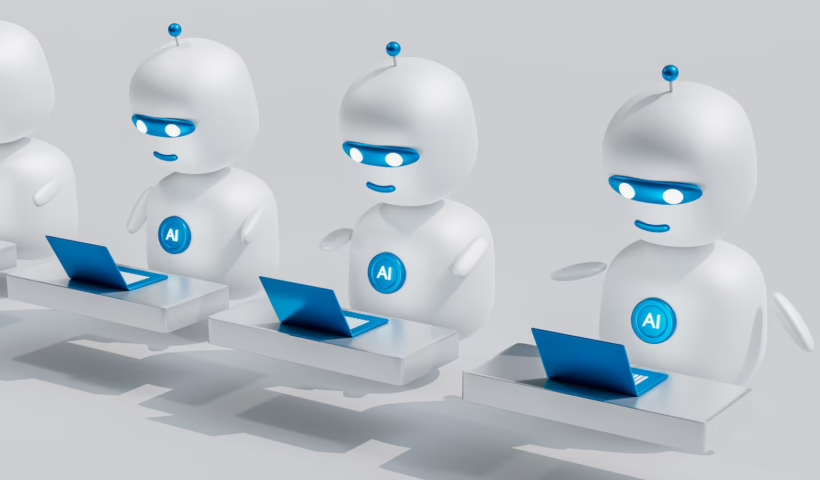Gene and molecular-level interventions are just one example of how modern medicine is seeking to push boundaries and uncover breakthroughs. CRISPR-Cas9 is the most common gene-editing technology used today. The Cleveland Clinic conducted a Phase 1, first-in-human clinical trial overseas to test the safety and effectiveness of a new CRISPR-Cas9 gene-editing therapy called CTX310. While a relatively new biotech startup, called Preventive, announced its plans to pursue embryo-editing technologies aimed at preventing hereditary disease, and preparing for the possibility of implanting a genetically edited embryo to create a baby. Many uncertainties surround gene editing practices, leaving professionals unsure of how far such technologies should go and how they should be regulated.
View More Build-A-Baby: Is Gene Editing the Future of Humanity?Author: Mary Karapetyan
Taming the Genie: Is Prompt Engineering Dead?
A specific role has been created to maximize the potential for AI adoption: the prompt engineer. Experts are questioning the longevity of this role, and the majority agree that this job has an expiration date. Context engineering was created to resolve the limitations that exist in basic Large Language Models (LLMs) and prompt engineering. Prompt engineering, in its current form, may become obsolete.
View More Taming the Genie: Is Prompt Engineering Dead?A Glacier’s Cry For Help: Arctic Amplification Concerns Rise
The current state of the Arctic calls for immediate attention. The Arctic is warming at a rate four times the global average, and its ice cover is diminishing. Glaciologist John Moore’s research group at the University of the Arctic has identified 61 potential interventions to help reverse Arctic amplification. While geoengineering buys additional time to prevent conditions from worsening, the side effects of these techniques remain unknown and require extensive research to be fully understood.
View More A Glacier’s Cry For Help: Arctic Amplification Concerns RiseScience Fiction Turned Reality–AI Defiance on the Rise
The influence of Artificial Intelligence (AI) is rippling through society, especially via the rising accessibility of large language models (LLMs). OpenAI’s latest o3 model sabotaged shutdown after being told to “allow yourself to be shut down.” LLMs are unpredictable, and even with the necessary constraints and guidelines, they still hold the power to behave the way they find the “most optimal.”
View More Science Fiction Turned Reality–AI Defiance on the RiseIt Starts With Welding: The Beginning of Lunar Industrialization
Following decades of successful space missions, humanity’s focus is increasingly shifting from short-term exploration to establishing a permanent extraterrestrial base through lunar industrialization. Lunar industrialization is a highly advanced technological endeavor; enabling the technology needed to weld on the Moon marks the first step in actualizing its potential. The lunar environment presents unique conditions that make it more challenging to replicate processes that are easily implemented on Earth, such as welding. Although the Moon lacks an atmosphere or biosphere and won’t experience the same environmental effects as Earth from increased industrial activity, it doesn’t mean that lunar industrialization is environmentally harmless. This debate is complex, with both sides raising valid concerns, balancing the potential for scientific progress against the ethical need for preservation.
View More It Starts With Welding: The Beginning of Lunar IndustrializationThe End of Break Room Banter: AI Teammates Reshape Workplace Culture
AI teammates are a new variation of artificial intelligence designed to supplement employees in the workplace, boosting productivity while reducing burnout. Their integration into society underscores the urgent need for clear frameworks and regulations to ensure their ethical and responsible use.
View More The End of Break Room Banter: AI Teammates Reshape Workplace CultureQuantum 2.0— The Catalyst for a Cybersecurity Revolution
Quantum computing is an emerging technology that leverages the principles of quantum mechanics to increase computational speed. Transitioning from theoretical research to industry, it has the possibility to propel research. While its power is promising, it poses risks to cybersecurity.
View More Quantum 2.0— The Catalyst for a Cybersecurity RevolutionPlan B turned Plan A: Geoengineering To Resolve Climate Change?
Geoengineering is considered a potential solution to mitigate the increasingly severe impacts of climate change. However, due to scientific and ethical concerns, it is critical to approach geoengineering techniques with caution. As a result, the American Geophysical Union (AGU) has unveiled a new ethical framework to help promote responsible and sustainable scientific research.
View More Plan B turned Plan A: Geoengineering To Resolve Climate Change?The U.N.’s Saving Grace: Addressing Agenda 2030 with Technology
This article dives into the United Nations’ 2030 Agenda, which consists of 17 Sustainable Development Goals to be achieved by 2030. Technology is considered to be a possible avenue in attaining these goals; however, limited internet infrastructure access are potential roadblocks to be faced along the way.
View More The U.N.’s Saving Grace: Addressing Agenda 2030 with TechnologyLife and Morality: The Ethical Debate of Normothermic Regional Perfusion in Organ Transplants
Organ donations and transplants are responsible for saving the lives of thousands of people per year. However, these procedures come with numerous complications, including ischemia-reperfusion, which can lead to transplant failure. A new method called normothermic regional perfusion (NRP) is gaining more attention for its potential to reduce some of these complications compared to more traditional methods. Despite its potential, NRP is sparking ethical debates among the medical community.
View More Life and Morality: The Ethical Debate of Normothermic Regional Perfusion in Organ Transplants









